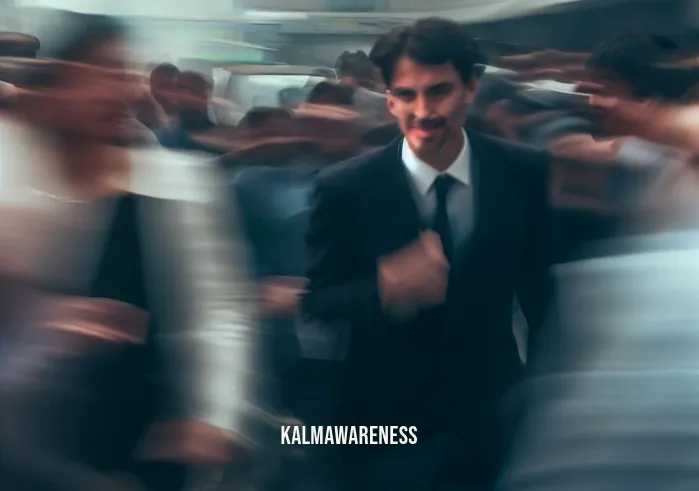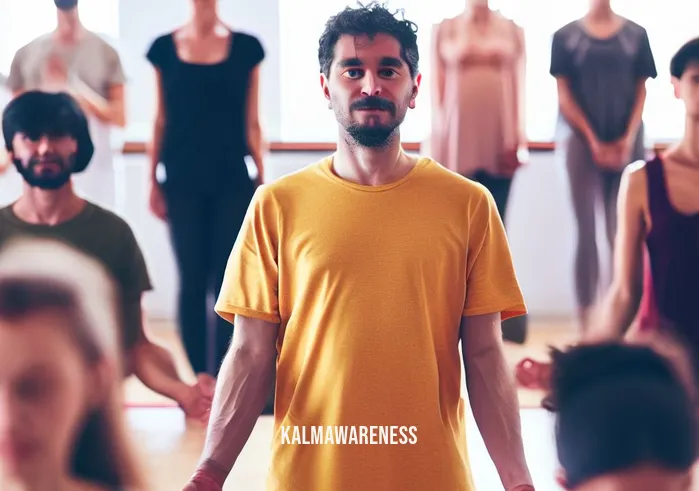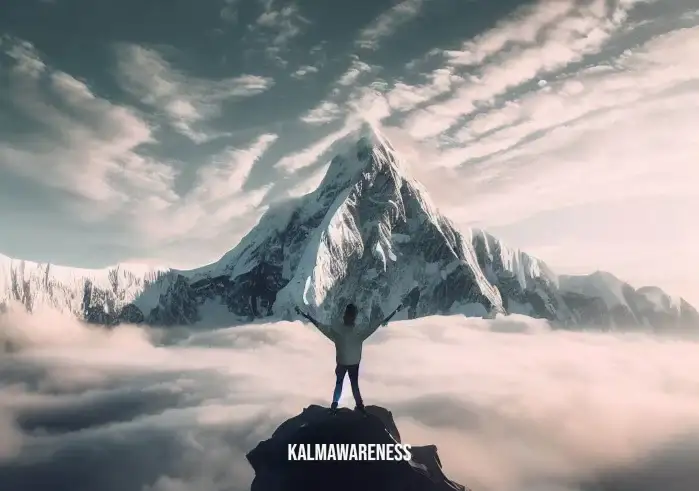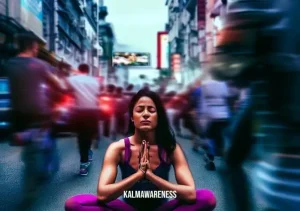Which of the Following Statements is True of Meditation? An Exploration
Meditation, an ancient practice often associated with mindfulness, inner peace, and self-awareness, has been discussed, analyzed, and embraced by numerous cultures across the world. Given its deep roots and widespread popularity, numerous statements have been made about meditation—some factual, others purely anecdotal. This raises the question: which of the following statements is true of meditation? As we delve into this topic, we’ll explore the multifaceted nature of meditation and address common misconceptions. This series will not only enrich your understanding of meditation but also guide you on a journey to discover its essence.
A Brief Introduction to Meditation
Meditation is a practice that involves attaining a peaceful state of mind in which thoughts are not occupied by worry. Its goal is to achieve a state where the mind is calm, and the individual is present. Historically rooted in spiritual traditions, including Buddhist temples in places like Kansas City and beyond, meditation has become a global phenomenon.
Different forms of meditation cater to various needs. Some involve deliberate focus on elements such as breathing, a critical element of some meditation exercises, while others might emphasize movement, such as the mindful movements that assist in better sleep. There are even practices that incorporate yoga or hypnobirthing, showcasing meditation’s versatility.
Understanding the Core Essence
When someone mentions the word ‘meditation,’ it’s easy to visualize someone sitting cross-legged, eyes closed, immersed in deep contemplation. However, meditation can take many forms. The essential goal remains the same: achieving mindfulness and inner peace.
For instance, Rouse Yoga offers an amalgamation of yoga and meditation, providing practitioners with a holistic experience. In contrast, Jack Kornfield’s meditation for beginners breaks down the process, making it accessible to everyone, regardless of their familiarity with the concept.
Debunking Common Misconceptions
Meditation is often shrouded in myths and misconceptions. One of the common misunderstandings is the belief that meditation requires a specific posture, like sitting. However, did you know that you can meditate lying down? This is an excellent example of how diverse and adaptable meditation can be.
Another myth is that meditation involves detaching oneself from reality. The statement “I am not the body, I am not even the mind” meaning is often misunderstood. While meditation encourages self-awareness and a deep connection with one’s inner self, it doesn’t advocate for complete detachment from reality. Instead, it promotes a balanced view, teaching practitioners to live in the moment, be peaceful, and embrace mindfulness.
How Meditation Intersects with Everyday Life
It’s fascinating to see how meditation principles apply to everyday scenarios. For instance, “keep in mind” is a phrase we frequently use. Its definition encourages mindfulness and being present—a central tenet of meditation. Similarly, creating space in our daily lives for meditation can help stabilize emotions and thoughts. The process of stabilizing our minds and emotions is crucial, especially in a world that often feels chaotic.
Some wonder how meditation practitioners achieve deep states of mindfulness so quickly. The secret lies in the consistent practice and understanding of meditation’s core principles. Over time, the practice can lead to sustainable self-care and a profound sense of inner peace.
Looking Forward
As we continue our exploration in the next segment, we’ll delve deeper into specific types of meditation practices, from those that focus on mindful movement to others that emphasize touch and body awareness. This journey will provide a comprehensive understanding of meditation’s vast landscape, and by its end, you’ll be equipped to discern which statements about meditation hold water and which are merely myths.
To gain more insights into the world of meditation and its many facets, continue reading. The knowledge awaits.

Delving Into the Truths of Meditation
Meditation, as a practice, has been surrounded by a cloud of myths, misinterpretations, and genuine truths. Determining “which of the following statements is true of meditation?” can be challenging, especially when there’s an ocean of information. By focusing on concrete facts and debunking common misconceptions, we aim to provide clarity on this subject. In this chapter, we will expand our exploration, presenting structured insights in both list and tabular formats.
Key Truths about Meditation
- Adaptability: Meditation isn’t limited to a fixed posture. As discussed in can u meditate lying down, the practice is adaptable to individual preferences.
- Holistic Approach: Meditation integrates the mind, body, and spirit, emphasizing a sustainable self-care approach.
- Mindful Living: Being in the present is a cornerstone of meditation. It’s not just about seated contemplation but also extends to activities like mindful walking or even mindful hypnobirthing.
- Varied Techniques: From practices focusing on touch and body awareness to those centered around breathing and visualization, meditation boasts a rich array of techniques.
Common Misconceptions Debunked
- Exclusivity: Meditation isn’t limited to monks or those living in monasteries. Anyone, from any walk of life, can embrace meditation.
- Quick Results: While some might feel the effects quickly, as mentioned in how we get deep so fast, for many, it’s a journey of consistent practice.
- Complexity: One doesn’t need to understand intricate philosophies. Basics like focusing on one’s breath can be a starting point.
Analyzing Meditation Statements: A Tabular Overview
| Statement | Truth Value | Explanation |
|---|---|---|
| Meditation can only be done seated. | False | As seen in practices like mindful walking, it’s versatile. |
| It leads to detachment from reality. | False | Meditation promotes awareness of the present, not detachment. |
| Consistent meditation can assist in achieving inner peace. | True | Regular practice helps in calming the mind and attaining tranquility. |
| One has to be religious to meditate. | False | Meditation transcends religious boundaries and is accessible to everyone. |
| Techniques might vary, but the core essence is mindfulness. | True | Whether it’s breathing exercises or body part awareness, mindfulness is the key. |
In conclusion, the question “which of the following statements is true of meditation?” isn’t black and white. The practice is layered, diverse, and deeply personal. It’s essential to approach meditation with an open mind, willing to experience its varied nuances.
In the next chapter, we’ll further explore meditation’s application in everyday life and its transformative potential. How does it influence our daily decisions, and what can one expect as they dive deeper into the practice? Continue reading to embark on this enlightening journey.

Meditation’s Muse: Unearthing Hope and Truth
In the realm of meditation, countless individuals have found solace, inspiration, and moments of profound clarity. By diving deeper into the central question, “which of the following statements is true of meditation?”, we uncover stories and truths that resonate with hope. With meditation being such a transformative force, it’s no surprise that it’s often the wellspring of inspiration for many.
The Power of Words: Resonating Quotes on Meditation
“The thing about meditation is: You become more and more you.” – David Lynch. This quote echoes the journey of self-discovery meditation offers, emphasizing the sentiment in “I am not the body, I am not even the mind.”
“Meditation is a way for nourishing and blossoming the divinity within you.” – Amit Ray. Meditation, as expounded in teachings from Buddhist temples in Kansas City, is a path towards inner enlightenment and peace.
“In meditation, we discover a calm amidst life’s storm.” – Unknown. It signifies the essence of achieving inner peace through meditation, regardless of external chaos.
Real-Life Stories: From Turbulence to Tranquility
Maya’s Journey: Maya, a tech professional, found herself overwhelmed by the demands of her job and the pace of city life. However, after attending a session focused on the element of breathing in meditation exercises, she realized the depth of calm one could achieve by merely focusing on the breath. Today, she advocates for the role of meditation in stress management, finding her grounding amidst the chaos.
Sam’s Transformation: Once struggling with anger issues, Sam stumbled upon a quote from the renowned book “Judgement of the Wise“. Intrigued, he began to meditate, channeling his energy towards mindfulness. His journey stands as a testament to the transformative power of consistent meditation, as he now leads community sessions fostering love and understanding.
Lea’s Moment of Clarity: While the concept of creating space in one’s life can be metaphorical, for Lea, it was literal. After attending a retreat, she realized how cluttered her life and mind had become. Meditation became her tool for decluttering, leading to improved mental well-being and the opening of her own wellness center.
Drawing Inspiration from the Truths
Discovering the veracity behind statements related to meditation is more than just distinguishing fact from fiction. It’s about unearthing personal truths, gaining insights, and drawing inspiration from real-life stories. It’s about understanding that while the techniques might vary – from focusing on a body part to visualizations – the essence remains the same: achieving inner peace and mindfulness.
In our subsequent chapter, we’ll journey through the practical applications of meditation. How does one integrate these truths and inspirations into daily life? How can one maintain a consistent meditation practice amidst the demands of modern life? To uncover these answers and delve into actionable insights, continue reading.

Meditation Decoded: Unpacking the Truths
Diving into the expansive world of meditation, we find a spectrum of beliefs, practices, and teachings. But central to our quest is answering the intriguing question, “which of the following statements is true of meditation?”. In this chapter, we’ll methodically break down complex concepts using structured formats, making them more accessible and easier to comprehend.
The Core Pillars of Meditation
- Mindfulness: Being present and fully engaged with the current moment. It’s not just about formal practice but also about incorporating mindfulness into daily tasks, like the simple act of walking.
- Inner Peace: Achieving a state of internal harmony, as emphasized in practices that advocate being peaceful.
- Adaptability: Embracing various techniques and postures, from sitting to lying down and everything in between.
- Self-awareness: The journey towards understanding oneself better, resonating with sentiments like “I am not the body, I am not even the mind“.
Common Meditation Techniques: A List
- Focused Attention: Concentrating on a single point, be it your breath or an external object.
- Body Scan: Directing attention to different parts of the body, feeling sensations without judgment, often associated with practices that focus on body awareness.
- Guided Visualization: Using the imagination to visualize a peaceful setting or scenario, enhancing feelings of calm and serenity.
- Loving-kindness (Metta) Meditation: Sending out love and positive energy first to oneself and then expanding it outwards.
- Mindful Movement: Incorporating physical movement with mindfulness, as seen in practices like yoga.
Deconstructing Meditation Myths
- Limited to Spiritual Seekers: Meditation is for everyone, regardless of religious or spiritual beliefs.
- Requires Hours of Practice: Even short sessions, if consistent, can bring profound benefits.
- All about Emptiness: Contrary to the notion of emptying the mind, it’s more about understanding and observing one’s thoughts, as highlighted in the concept of “creating space“.
How Meditation Influences Daily Life
- Decision Making: Aids in making decisions from a place of calm, reducing impulsivity.
- Interpersonal Relationships: Enhances empathy and understanding, fostering better connections.
- Stress Management: Acts as an anchor during turbulent times, drawing parallels with the message in “how we get deep so fast“.
- Enhanced Focus: Reduces the tendency to get sidetracked, improving productivity and attention span.
Wrapping up this deep dive, it becomes evident that the world of meditation is vast, intricate, and profoundly impactful. But as we transition to our final chapter, we’ll weave together everything we’ve learned. The culmination will offer a holistic perspective, answering once and for all, “which of the following statements is true of meditation?”. Stay with us for this enlightening conclusion.

Reflections on Meditation: Discovering Timeless Truths
As we find ourselves at the crossroads of conclusion and contemplation, we reflect on our explorative journey centered around the pivotal question: “which of the following statements is true of meditation?”. This expedition into the depths of meditation’s essence has unveiled a panorama of insights, debunked myths, and shared inspiring tales.
A Glimpse into Our Exploration
- We delved into the foundational pillars of meditation, from the serenity of inner peace to the momentary embrace of mindfulness.
- Stories of personal transformation, like Maya’s journey from chaos to calm or Sam’s path from anger to empathy, illuminated meditation’s transformative power.
- Our structured breakdowns shed light on varied techniques, from mindful movements to the tranquility of guided visualizations.
Real-World Application
Understanding meditation isn’t just an intellectual exercise. It’s about integrating these truths into daily life:
- Start small. Even a 5-minute focus on breathing during a busy day can reset the mind.
- Explore further. Dive into resources like the insights from judgement of the wise to enrich your understanding.
- Share the journey. Discussing with friends or joining a group can be an excellent way to stay motivated and learn from shared experiences.
A Heartfelt Thank You
To our cherished readers, your companionship on this enlightening journey has been the true force behind its realization. We hope the insights shared here not only enrich your understanding but inspire you to embark on your own meditation journey.
For those eager to explore more, we invite you to delve into other engaging articles on our platform, each designed to cater to the curious mind. Whether it’s understanding the depths of mindful hypnobirthing or exploring the wisdom of Buddhist temples in Kansas City, there’s always more to discover.
Moving Forward
As we wrap up this series, our invitation is simple: Keep asking questions, stay curious, and let meditation be your compass. While we’ve endeavored to answer the central question, remember that meditation is a personal journey, unique to each traveler.
Stay tuned for more thought-provoking content in our upcoming editions. Until then, may your path be filled with mindfulness, peace, and profound discoveries. Safe travels!





